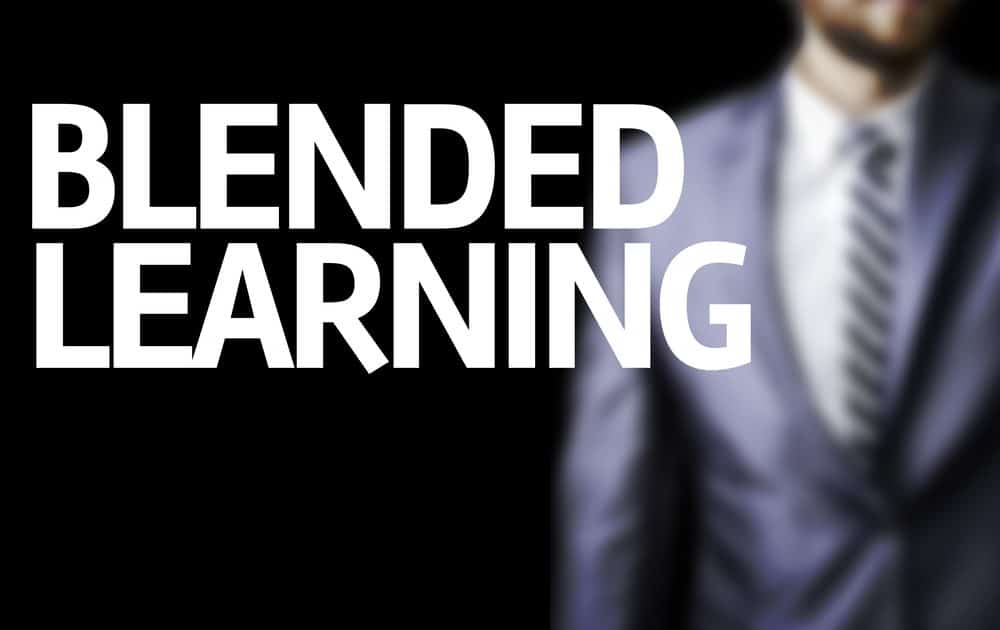Understanding Blended Learning: A Comprehensive Guide

Blended learning represents a fusion of traditional classroom teaching methods and modern digital learning techniques. This educational approach combines face-to-face instruction with online learning activities, harnessing the strengths of both physical and virtual learning environments. The blend varies, with some models leaning more towards in-person interactions while others emphasize online components. The key characteristic of blended learning is its flexibility in tailoring educational experiences to individual needs and circumstances.
The importance of blended learning in the current educational landscape cannot be overstated. In a world where technology increasingly intersects with every aspect of life, blended learning bridges traditional educational models with the digital future. It addresses students’ diverse learning styles and needs, providing a more inclusive and adaptable educational experience. This approach is particularly relevant in today’s dynamic and ever-changing educational scenarios, where adaptability and access to diverse learning resources are crucial.
This guide delves deep into blended learning, exploring its definition, components, benefits, challenges, and models, offering valuable insights for educators, students, and anyone interested in the evolution of teaching methods. It provides a thorough understanding of blended learning’s impact on education.
Defining Blended Learning
Blended learning is an educational approach that combines traditional classroom methods with online learning. It integrates face-to-face teacher-student interaction with digital mediums, creating a more flexible and personalized learning experience. This method allows learners to control the pace, time, and place of their learning, blending self-paced online activities with structured, in-class instruction. The goal is to provide an efficient, engaging, and effective learning environment.
The history and evolution of blended learning trace back to technological advancements and the Internet. It began to take shape with the introduction of personal computers in the 1980s and gained significant momentum with the widespread availability of the Internet in the 1990s. Over the years, blended learning has evolved, influenced by technological innovations like learning management systems, interactive digital content, and real-time communication tools. These advancements have transformed it into a dynamic and integral part of modern education, continuously adapting to the changing educational needs and technological landscapes.
Key Components of Blended Learning
Online learning elements are crucial in blended learning, offering flexibility and personalized experiences. This component typically involves digital platforms where students can access course materials, participate in discussions, and complete assignments independently. It facilitates a self-directed learning approach, enabling learners to engage with content outside the traditional classroom setting.
Traditional classroom elements in blended learning focus on face-to-face interactions between students and teachers. This aspect includes in-person lectures, group discussions, and hands-on activities. It provides immediate feedback, social interaction, and collaborative learning opportunities, enhancing the educational experience by blending the human touch with digital convenience.
Integrating technology in blended learning is the backbone connecting online and traditional elements. It encompasses learning management systems, digital content, and interactive tools that support both in-class and online activities. Effective integration ensures a seamless transition between different learning modes, enriching the educational experience and making learning more accessible, engaging, and efficient.
Benefits of Blended Learning
Blended learning is more than just a modern educational trend; it’s a transformative approach that brings many benefits to the learning process. This section explores the key benefits of this approach, highlighting how it caters to diverse learning needs and modern educational demands.
Personalized Learning Experiences
One of the standout advantages of blended learning is its capacity to offer personalized learning experiences. This approach allows educational content to be tailored to meet each student’s needs and learning styles. Whether through customized learning modules, adjustable difficulty levels, or varied content formats, blended learning ensures that every learner receives an education that resonates with their unique learning journey.
Blended learning also facilitates adaptive learning paths, which adjust based on a student’s performance and preferences. This dynamic approach enables learners to progress at their own pace, focusing more on areas where they need improvement and less on topics they’ve already mastered. Such personalized and adaptive learning enhances understanding and fosters a more engaging and satisfying educational experience.
Increased Accessibility and Flexibility
Blended learning significantly increases accessibility and flexibility in education. It opens up learning opportunities for remote or geographically dispersed students, breaking down the barriers of distance and location. This aspect is particularly beneficial for learners needing more access to traditional classroom settings due to geographical, health, or other personal constraints.
In addition to bridging geographical gaps, blended learning offers flexible scheduling options. It accommodates different learning paces and lifestyles, allowing students to engage with educational content at the most convenient times. This flexibility is crucial in catering to non-traditional learners, such as working professionals or those with family responsibilities. It enables them to balance their educational pursuits with other aspects of their lives.
Enhanced Student Engagement and Performance
Blended learning enhances student engagement and performance by incorporating interactive and diverse teaching methods. These methods range from digital simulations and interactive exercises to in-class discussions and hands-on projects. By diversifying the modes of instruction, blended learning keeps the educational experience fresh and engaging, maintaining student interest and motivation.
Furthermore, this approach provides immediate feedback and assessment opportunities. Students can track their progress in real-time, gaining a clearer understanding of their learning journey. This quick feedback loop helps students identify areas for improvement promptly, leading to better academic performance and a deeper understanding of the subject matter.
Cost-Effectiveness
Blended learning is also cost-effective, benefiting both educational institutions and students. Blended learning lowers overall educational costs by reducing the need for physical materials and infrastructure, such as textbooks and classroom space. Digital resources are often less expensive and more easily updated than traditional materials, leading to savings for schools and learners.
The economic nature of blended learning also extends beyond just material costs. It also saves resources in terms of time and effort, as digital components can often be more efficiently managed and distributed, leading to a more economical use of educational resources.
Improved Digital Literacy Skills
In today’s digital age, proficiency in technology is not just beneficial; it’s essential. Blended learning plays a pivotal role in enhancing digital literacy skills among students. Exposure to various digital tools and platforms, from learning management systems to interactive educational software, prepares students for a technology-driven workforce.
Integrating technology into the learning process allows students to become adept at navigating the digital world, which will undoubtedly serve them well in future careers and day-to-day life. This preparation is crucial as it equips students with the tools and confidence to succeed in an increasingly digital world.
Challenges and Solutions in Blended Learning
Implementing blended learning presents several challenges. One primary issue is the need for significant technological infrastructure and resources, which can be a hurdle for some institutions. Additionally, educators often require training to deliver blended learning courses effectively, and ensuring student engagement and participation in the online components is challenging. Balancing online and in-person instruction can be difficult, potentially leading to an inconsistent learning experience.
To overcome these challenges, adopting best practices is crucial. Ensuring access to necessary technological resources and providing comprehensive training for educators are fundamental steps. Educators should be equipped not just with the technical skills but also with strategies to engage students in a digital environment. Furthermore, establishing a clear structure for blended courses, with a well-defined balance between online and offline elements, can enhance consistency and effectiveness. Regular feedback from students can also guide continuous improvement. These solutions aim to optimize the blended learning experience, making it more effective and accessible for all involved.
Blended Learning Models
Blended learning can be implemented in various models, each with its unique approach. The Rotational model involves students rotating through different learning modalities, including online and in-person activities. The Flex model offers a more fluid structure, where most instruction is delivered online, and teachers provide support as needed. In the A La Carte model, students take some courses entirely online alongside traditional classes. The Enriched Virtual model blends online learning with required face-to-face learning sessions.
Each model has its pros and cons. The Rotational model is highly structured, offering a familiar rhythm, but it may lack flexibility. The Flex model is highly adaptable to student needs but requires a high level of self-discipline from students. A La Carte offers course variety but may lead to a disjointed experience. The Enriched Virtual model balances online and in-person instruction, though it may only suit some learning styles. Understanding these models allows educators to choose the most appropriate approach based on their students’ needs and resources.
Implementing Blended Learning
Implementing blended learning in educational institutions involves several key steps. It is essential to assess the technological infrastructure and ensure it can support blended learning platforms. Developing a clear instructional strategy integrating online and traditional teaching methods is next. This strategy should be tailored to the institution’s educational goals and student needs. Training educators to effectively use blended learning tools and techniques and setting up ongoing support and feedback mechanisms is also crucial.
The role of teachers in successful blended learning implementation is pivotal. They are not just content deliverers but facilitators who guide students through both online and offline learning experiences. Teachers must be adept at using digital tools and strategies to engage students and must be able to adapt to varying student needs and learning styles.
Learning Management Systems play a crucial role in blended learning. They serve as the backbone for online components, providing a platform for delivering content, facilitating communication, tracking student progress, and assessing student performance. A robust LMS enables a seamless blend of online and in-person learning experiences, making it an indispensable tool in the blended learning ecosystem.
Future of Blended Learning
Emerging trends in blended learning are shaping its future landscape. Personalized and adaptive learning technologies are becoming more sophisticated, offering even more tailored educational experiences. Integrating artificial intelligence and machine learning enhances the ability to analyze student data for improved learning outcomes. Additionally, the rise of virtual and augmented reality is set to offer immersive learning experiences that deepen engagement and understanding.
Predictions for the future of blended learning in education suggest an increasingly central role. It is expected to become more mainstream, blending seamlessly with traditional educational methods. The focus is likely to shift towards developing holistic learning experiences that are not just academically focused but also foster soft skills and lifelong learning habits. Blended learning’s flexibility and adaptability make it well-suited to meet the evolving demands of education in a rapidly changing world.
Blended Learning 101
Blended learning is a dynamic educational approach that combines traditional classroom instruction with online learning. It focuses on personalizing the learning experience, enhancing accessibility and flexibility, and improving student engagement and performance.
The implementation of blended learning involves:
- Thoughtful integration of technology.
- The pivotal role of educators.
- The effective use of learning management systems.
Various models like Rotational, Flex, and Enriched Virtual offer diverse approaches to this blended methodology.
Blended learning is poised to significantly impact education, reshaping how knowledge is delivered and absorbed. It offers a more inclusive and adaptable educational approach, catering to the diverse needs of modern learners. As technology evolves, blended learning will likely become integral to educational systems worldwide, preparing students for academic success and a future in an increasingly digital world.
Get in touch for a free demo and to discuss a tailored online learning solution for your organization.

